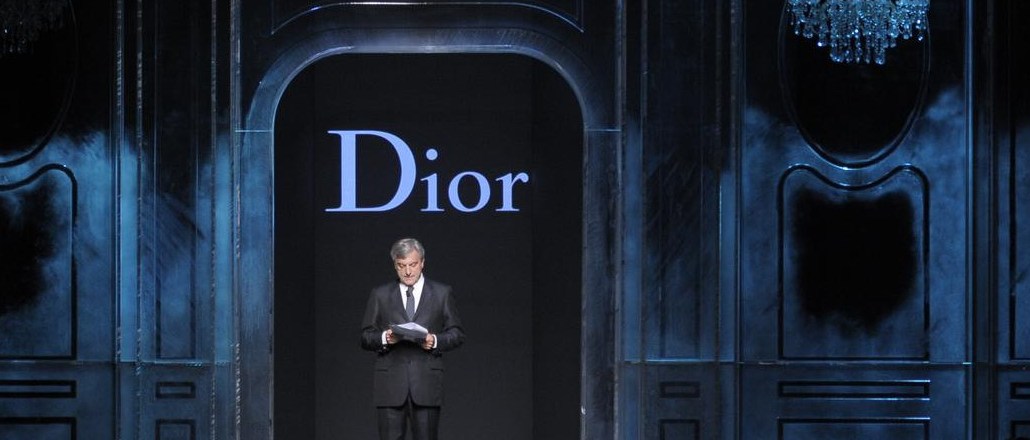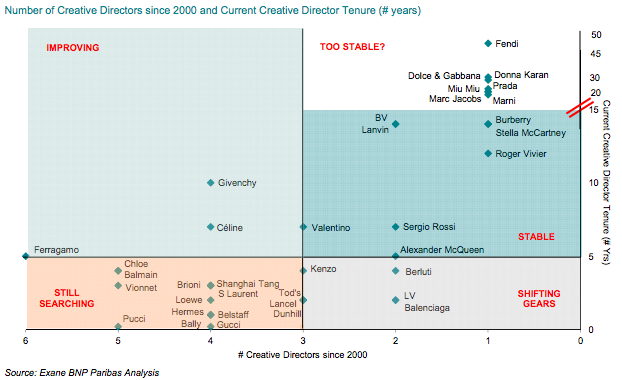Save 50% on a 3-month Digiday+ membership. Ends Dec 12.

As the fashion industry continues to move at breakneck speed, something has to give.
Designers have the weight of an industry in turmoil on their shoulders, as fashion struggles to evolve as quickly as its customers have in the digital age. Once marked by biannual runway shows — fall (shown in the spring) and spring (shown in the fall) — collections have sprawled as fashion tries to meet the demand of consumers’ “see now, buy now” mentality. Instead of two shows a year, a designer for one fashion house is now responsible for fall, spring, pre-fall, pre-spring, resort and summer collections.
In 2015, a string of high-profile creative director and fashion house breakups alarmed the industry. The designers behind Gucci, Donna Karan, Dior, Balenciaga and Lanvin all left their posts last year. At Donna Karan, it was the brand’s namesake stepping away from the line she founded in 1984. After leaving Dior, as his collections were receiving praise for reviving the brand, Raf Simons gave fashion critic Cathy Horyn a revealing look at the burnout created by the current demands of the fashion industry. Creative director Alber Elbaz was unceremoniously fired from his position at Lanvin due to disagreements with the business side of the company.
“Runway shows used to be for trade buyers and the press, and now they’re for everyone, thanks to digital,” said Luca Solca, head of global luxury goods at Exane BNP Paribas. “And if you try to close your collection off to the public, you risk being irrelevant. So, brands are reassessing what it means to have a runway show.”
On top of increasing output, designers are changing how they put their pieces out there. Rebecca Minkoff will show her spring/summer collection for 2016 this February, rather than last September, and put it online and in stores immediately. Givenchy opened a lottery system that raffled off tickets to 800 regular citizens to the Paris fashion house’s New York Fashion Week show in September. Burberry and Moschino have begun selling runway collections online (and, in Burberry’s case, on WeChat), as soon as they debut. Fashion brands are racing their newest collections to hit stores, since, thanks to Periscope live streams and Instagram video loops, the public is going to see it, and want to wear it, immediately.
The institution that puts on these runway shows isn’t blind to the change. In December, Vogue reported that CFDA, the company that runs NYFW, was considering overhauling the week of events by opening fashion week to the public. CFDA president and designer Diane Von Furstenberg said: “Something’s not right any more. Everything needs to be rebooted.”
“Fast fashion is the catalyst, especially Zara” said Rony Zeidan, founder of branding agency RO NY. “It’s able to replicate high fashion and have it in store well before fashion brands can, which has pushed high fashion to follow a cycle that’s similar to fast fashion.” And, he added, fast fashion wouldn’t be what it is without the immediacy granted by social media and e-commerce.
Zeidan pointed to the number of collection designers are now expected to produce as the industry’s answer to fast fashion’s quick churn. This has led to a creative crunch.
“There’s no time for the designer, who relies on influences and big ideas,” he said. “The design process is based on time and research, and that has been trimmed down significantly. That creates stress and reduces creativity, and it’s no surprise that these big designers, like Raf Simons, have chosen not to be there. They’re resisting the cycle. It’s a bit of a mess.”

Simons said himself to Horyn: “When you do six shows a year, there’s not enough time for the whole process. Technically, yes — the people who make the samples, do the stitching, they can do it. But you have no incubation time for ideas, and incubation time is very important.”
Consumers’ appetite for trendy clothing is fueled not only by fast fashion, but by contemporary, high end, not-quite-luxury designers that have grown organically online and gained followings on social media, like Mansur Gavriel and Prabal Gurung. Such competition didn’t exist in the past, when the barrier to entry for a fashion designer was higher, without the e-commerce store. According to an Exane BNP Paribas study, the barrier to entry in fashion is lower than ever, thanks to a surge in talent and wholesale opportunities online.
“Meanwhile, older designers are looking at Instagram and thinking, ‘what is this? I don’t have time for this,’” said Zeidan.
More in Marketing

Agencies push curation upstream, reclaiming control of the programmatic bidstream
Curation spent much of this year in a fog, loosely defined and inconsistently applied. Agencies say they plan to tighten the screws in 2026.

‘A trader won’t need to leave our platform’: PMG builds its own CTV buying platform
The platform, called Alli Buyer Cloud, sits inside PMG’s broader operating system Alli. It’s currently in alpha testing with three clients.

Why 2026 could be Snap’s biggest year yet – according to one exec
Snap’s senior director of product marketing, Abby Laursen talked to Digiday about its campaign automation plans for 2026.





